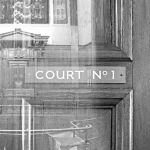Summary
- Understanding creditor rights and priorities in UK company insolvency cases (England and Wales law differs to Northern Ireland and Scotland) is vital to increase the chance of recovery.
- Early signs such as missed payments and communication breakdowns can offer an opportunity to act before formal insolvency begins.
- The best methods for enforcing debt recovery after debtor liquidation include pre-insolvency legal tools such as charging orders and High Court Enforcement.
- How creditors can recover debt after company insolvency depends on prompt action, formal registration with Insolvency Practitioners, and involvement in creditor processes.
Introduction
Company insolvencies have increased in 2025. Economic pressures, high interest rates, and global uncertainty are pushing more companies into liquidation or administration. For creditors, this means greater risk, more complex recovery paths, and increasing competition for limited assets.
This article sets out how creditors can recover debt after a UK company (England and Wales law differs to Northern Ireland and Scotland and so these piece focuses on English and Welsh registered companies) becomes insolvent, with practical advice based on current procedures, legal tools, and typical outcomes. While recoveries are often low, informed creditors can improve their position with timely action and the right strategies.
Understanding English and Welsh Insolvency Paths and What They Mean for Creditors
In England and Wales, the main formal insolvency procedures are Creditors’ Voluntary Liquidation (CVL), compulsory liquidation, and administration.
In a CVL, the company’s directors voluntarily wind up the company, usually after realising it cannot pay its debts. Creditors can nominate the Insolvency Practitioner (IP) and vote on the process.
Compulsory liquidation is court-ordered, often initiated by creditors. Control of the process lies with the Official Receiver or a court-appointed liquidator.
Administration aims to rescue the company or achieve a better return for creditors than liquidation. It gives the company legal breathing space through a moratorium that prevents creditors from taking court action.
In all cases, creditors must register their claims, but the likelihood of recovery depends on whether they are secured or unsecured creditors and the company’s available assets.
Early Warning Signs & Pre-Insolvency Action
Spotting early signs of debtor insolvency is critical. These may include:
- Repeated missed payments
- Sudden changes in company directors or structure
- Silence or vague responses from accounts departments
- Legal threats from other suppliers
What to Do When Insolvency Hits
Once notified of a customer’s insolvency, creditors must act fast. Start by registering your interest with the appointed Insolvency Practitioner.
Provide all supporting documents including outstanding invoices, contracts, and correspondence. This helps the IP verify your claim and rank your debt appropriately.
Also, you need to understand the creditor hierarchy:
- Secured creditors with fixed or floating charges are paid first.
- Preferential creditors, such as certain employee claims and HMRC, are next.
- Unsecured creditors are last and typically receive the smallest share.
Prompt registration and complete documentation can make a difference in how your claim is processed and paid.
Maximising Recoveries: Legal Tools and Enforcement Options
Timing is everything. Once a company enters formal insolvency, legal enforcement is generally stayed. However, if warning signs appear early, legal tools may still be available.
Consider obtaining a CCJ and transferring it to the High Court for enforcement by a High Court Enforcement Officer (HCEO). This can lead to quicker recoveries if assets are seized before insolvency is declared.
Other options include charging orders (securing a debt against property), third-party debt orders (freezing funds in bank accounts), and orders for sale where applicable.
Do not forget the Late Payment of Commercial Debts (Interest) Act 1998. Creditors can claim interest, compensation, and recovery costs on overdue B2B debts. These sums can be added to the insolvency claim and may slightly improve returns.
Creditor Rights During the Process
Creditors have a role in insolvency proceedings. Attend creditors’ meetings where proposals are put forward, particularly in CVLs and administrations.
You may have voting rights proportionate to your debt value and can challenge proposed outcomes or fees.
Creditors can also raise concerns about transactions at undervalue or unfair preferences that benefited one party over others before insolvency. If successful, these can be reversed and assets returned to the estate for wider distribution.
Conclusion and Action Checklist
Recovering debt from an insolvent company is rarely simple, but small businesses can protect themselves with preparation, fast action, and awareness of their rights.
Below is a checklist to follow the moment insolvency is suspected or declared:
- Monitor customer accounts for early warning signs
- Act on overdue invoices immediately and document all communication
- Use legal tools (CCJ, HCEO, charging orders) before formal insolvency where possible
- Register your claim with the Insolvency Practitioner promptly
- Attend creditor meetings and vote where allowed
- Seek advice on challenging preferential or undervalue transactions
- Record and submit claims for late payment interest and compensation
Frequently Asked Questions
1. What is the first thing a creditor should do when notified of a company’s insolvency?
Register your interest with the appointed Insolvency Practitioner immediately and submit all supporting documentation.
2. Can I still enforce a judgment if my customer is about to go insolvent?
Yes, but only before the insolvency is formally declared. Once proceedings begin, enforcement is stayed. Act quickly if signs of insolvency appear.
3. What if I am an unsecured creditor?
You may receive a small dividend, but this depends on available assets after higher-ranked creditors are paid. Prompt registration improves your chances.
4. Can I claim interest and costs on overdue invoices in an insolvency process?
Yes. Under the Late Payment of Commercial Debts (Interest) Act 1998, you can claim statutory interest, compensation, and reasonable costs.
5. Should I attend creditors’ meetings during insolvency?
Yes. These meetings give you a voice in the process and allow you to challenge proposed outcomes, vote on proposals, or raise objections.


